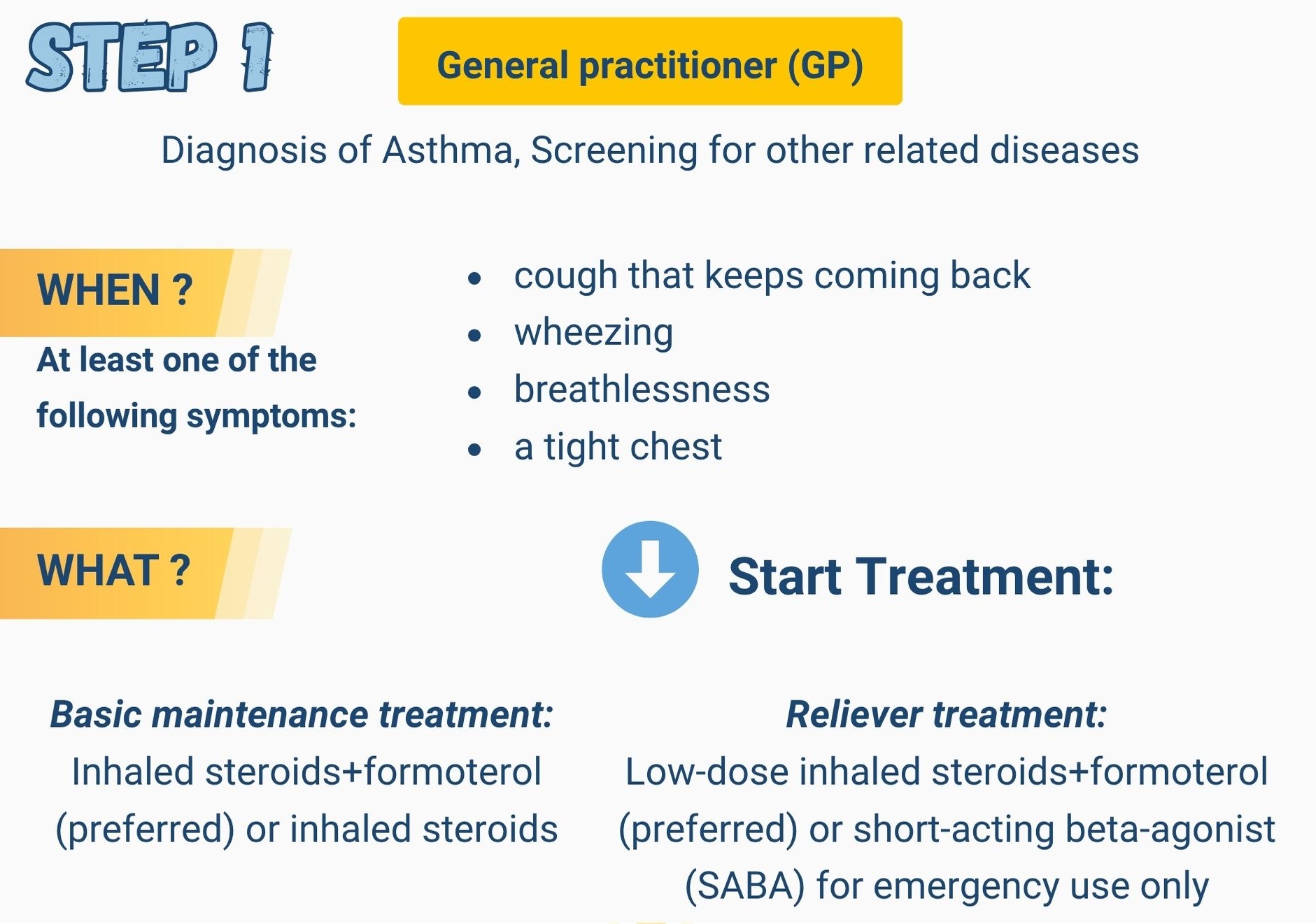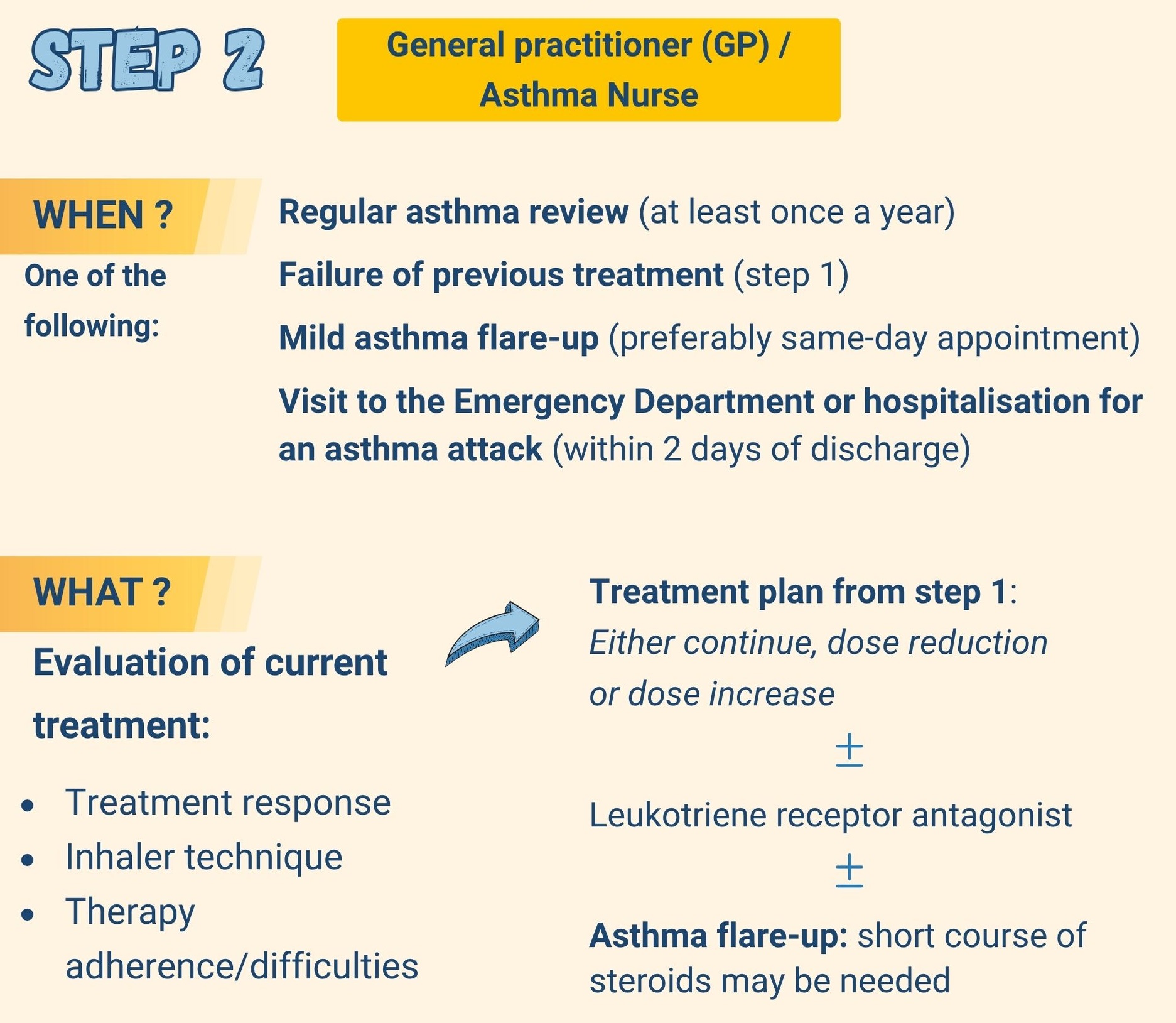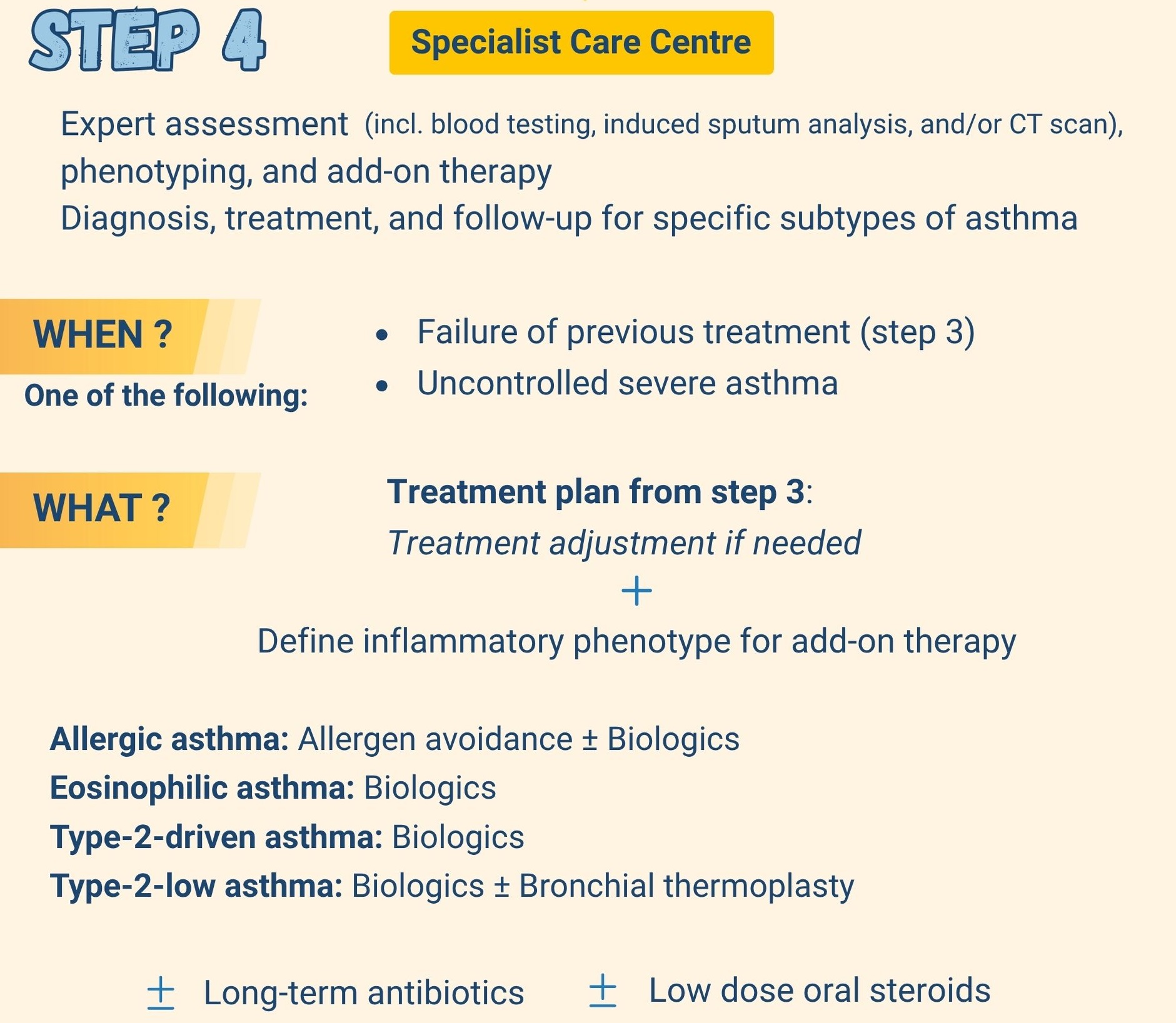Understanding your asthma journey can feel overwhelming, but know you’re not alone. This module breaks the patient journey into four clear stages, guiding you step by step. Most patients remain at Step 2 (regular follow-up by the GP or asthma nurse) if their asthma is well-managed, progressing only if symptoms persist or worsen.
Some parts of asthma care apply to all four stages, no matter where you are in your journey. This includes:
Your care team will also look out for other health conditions that often occur alongside asthma and refer you to a specialist if needed. If you experience signs of a severe asthma attack, your patient journey skips these steps - you need emergency care right away! After an emergency room visit or a hospital stay for asthma, make sure to follow up with your regular doctor to review your treatment plan.
For the best experience, we recommend reviewing the earlier modules to get familiar with key terms. You can also check out our Glossary for additional support. Take control of your asthma journey, one step at a time!
Keep in mind that access to certain healthcare providers and medications can vary depending on your country and local healthcare policies. The chart below gives a general overview, but the exact steps or options may be different where you live.
If you experience symptoms like a cough that keeps coming back, chest tightness, shortness of breath or wheezing, you should visit your general practitioner. Your GP will ask about your symptoms, what triggers them, evaluate your past, social and family history, and perform a physical examination. Lung function should be tested whenever possible. The best and most reliable test for diagnosing asthma is called spirometry. If this test isn’t available, a simpler test called peak flow measurement can be done at your GP’s office.
If the results indicate that you have asthma, a treatment plan will be provided. You will be shown how and when to use your medication, how to monitor your asthma (for example, using your mobile phone), and what to do if you experience breathing difficulties. Follow-up care is usually managed by your GP or asthma nurse. Sometimes, if the asthma diagnosis is uncertain, you will be given a trial of inhaler treatment for a few weeks to see if it helps.

It is important to have an asthma review at least once a year with your GP or asthma nurse. This check-up makes sure your asthma action plan is still right for you. It shows if you are on the best treatment and dose for your current situation, and you are using your inhaler correctly. Since asthma can vary over time, it's helpful to keep a record of your symptoms—either in a paper asthma diary or by using an app on your mobile phone.
If your asthma is well controlled, treatment may stay the same or be reduced (“stepped down”) to the lowest effective dose. In case your symptoms persist, your GP or asthma nurse will review treatment effectiveness, inhaler use, and any barriers to following the plan. Your lung function may be tested again.
All of this helps guide the next steps in your treatment. That might mean switching to a different inhaler, adding another medication, or adjusting your current dose (called “stepping-up”) to better manage your symptoms.
If you’ve had an asthma flare-up that you managed at home, you should see your GP or asthma nurse as soon as possible, ideally the same day. If the flare-up led to a visit to the emergency room or a hospital stay, book a follow-up appointment with your GP or asthma nurse within 2 days after discharge. This is to review your treatment and help prevent future attacks.

If your symptoms have not improved after a reasonable amount of time—even after your treatment plan has been adjusted—and you have been taking your medication correctly and on time, it’s time to see a specialist, usually a pulmonologist or respiratory physician. In some countries, you may need a referral from your GP or asthma nurse to make that appointment.
Another reason to see a specialist is if your GP or asthma nurse is not completely sure that asthma is the cause of your symptoms. In that case, more detailed testing may be needed. A lung specialist can help confirm whether you have asthma or if something else might cause your symptoms. This makes it easier to find the right treatment for you.
If you have signs of other conditions that often occur alongside asthma, you may also be sent to see another type of specialist. For example, you might have a consultation plus allergy tests with an allergist or visit an ear, nose, and throat doctor.

If symptoms persist despite adapting treatment, a specialist care centre can provide advanced care. This tertiary referral stage involves follow-up evaluations, treatment adjustments, and specialised tests to determine what kind of asthma you have. The goal is to find the most effective approach to help you feel better.

This website does not provide medical advice.
The information, including but not limited to, text, graphics, images, and other material contained on this website is for informational purposes only. No material on this site is intended to be a substitute for professional medical advice, diagnosis, or treatment and/or medical treatment of a qualified physician or healthcare provider. EUFOREA is not a medical organisation and cannot provide specific medical advice to patients via the Internet and/or E-mail. All patients are encouraged to direct their specific questions to their personal physicians. EUFOREA presents this information to patients so that patients can understand and participate in their own medical care. EUFOREA strongly emphasises that the information contained on this website is not a substitute for thorough evaluation and treatment by a qualified healthcare provider.
© 2025 - EUFOREA - All rights reserved. All content on this portal, such as text, graphics, logos and images, is the property of EUFOREA. They may not be reproduced, copied, published, stored, modified or used in any form, online or offline, without prior written permission of EUFOREA.